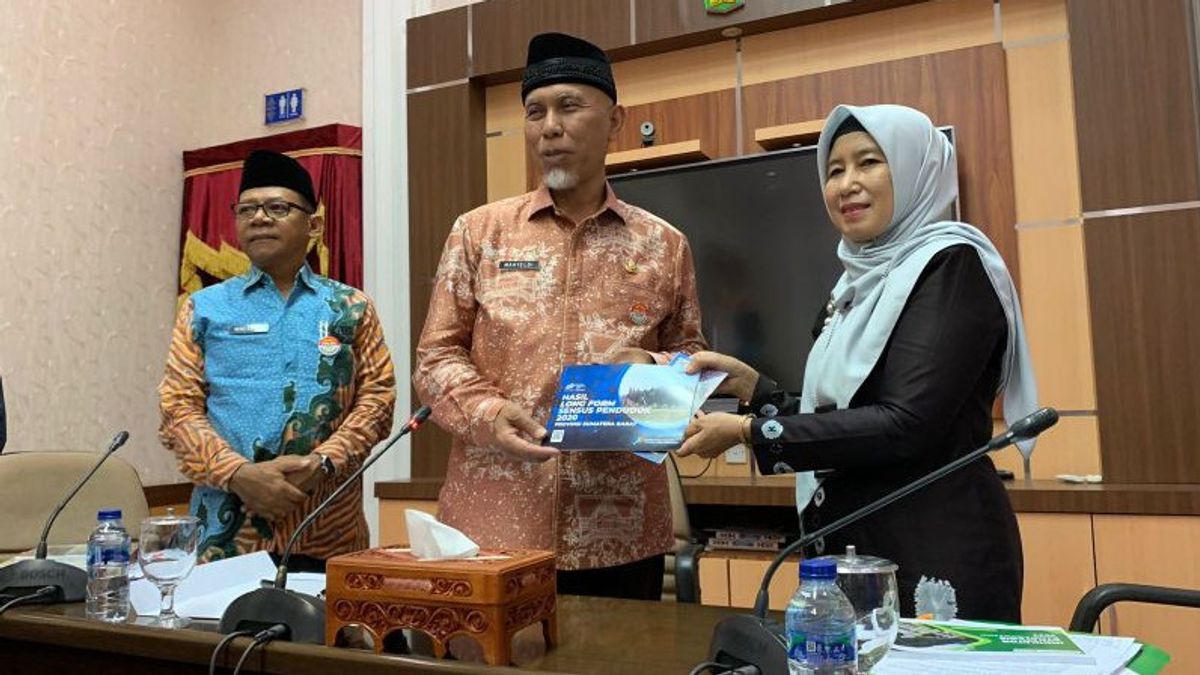PADANG - The Central Statistics Agency (BPS) of West Sumatra recorded that the number of marriages for teenagers aged 15-19 years has decreased sharply in the last 10 years.
West Sumatra BPS Head Herum Fajarwati said the decline in youth fertility ranged from 28 per 1,000 teenagers to around 14 births per 1,000 teenagers in 2022.
"There has been a decline in adolescents who gave birth in West Sumatra in the last ten years," he said while giving the results of the Advanced Population Census to the Governor of West Sumatra Mahyeldi in Padang, Antara, Thursday, March 9.
In addition, West Sumatra also succeeded in controlling birth, which was marked by a decrease in birth rate, a total of 2.46 in 2022, which means that around two to three children were born to women during their reproductive period.
Then the infant mortality rate also decreased sharply from 30 babies per 1,000 births to 16 infants died per 1,000 births in 2022 in West Sumatra and the maternal mortality rate when pregnant, giving birth or nifas in West Sumatra is currently lower than the national figure.
"In West Sumatra, the maternal mortality rate is 178 out of 100 thousand live births while the national figure is 189 out of 100 thousand live births," he said.
After that, the prevalence of disabilities aged five years and over in West Sumatra more occurred in the elderly or 60 years and over and there was no significant difference between the disabilities of men and women as well as in residential areas between urban and rural areas.
For the field of human resources, he said, around seven out of 100 residents of West Sumatra were born in other provinces, and most were in Generation X or a generation aged 42-57 years.
Then about one to two people from 100 residents aged five years and over in West Sumatra are commuters or work or schools outside the regency and city where they live.
"They go home regularly on the same day," he said.
Furthermore, the majority of the people of West Sumatra aged 15 years and over are educated in secondary or equivalent schools and the Indonesian language skills of the people of West Sumatra are 97.11 percent, most of which still maintain regional languages to communicate in families of 93.78 percent and neighborhoods/regents at 94.37 percent.
"In terms of housing, 97.83 percent of households in West Sumatra occupy houses that meet the requirements for building resilience, which can be seen from the roof, walls, and the widest floors," he said.
The English, Chinese, Japanese, Arabic, and French versions are automatically generated by the AI. So there may still be inaccuracies in translating, please always see Indonesian as our main language. (system supported by DigitalSiber.id)
Most Popular Tags
#Prabowo Subianto #New Year #pdip #Hasto Kristiyanto #nataru #NatalPopular
28 Desember 2024, 02:00
28 Desember 2024, 04:00








